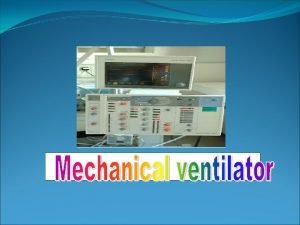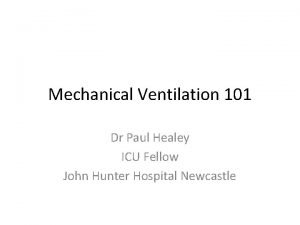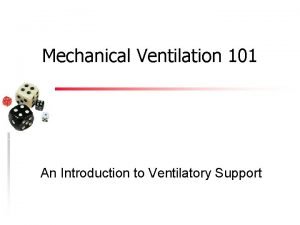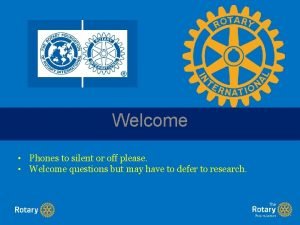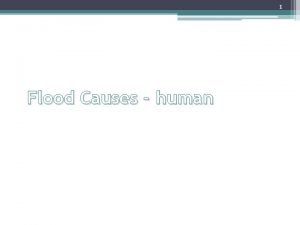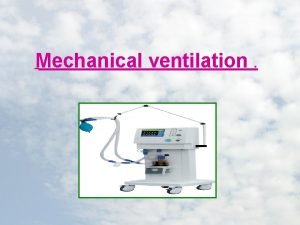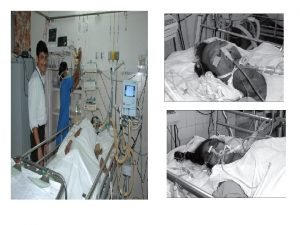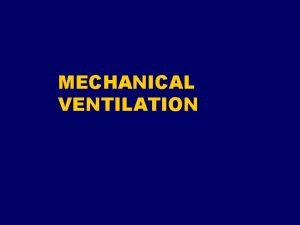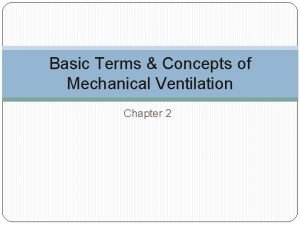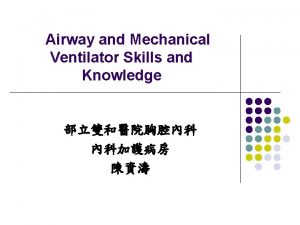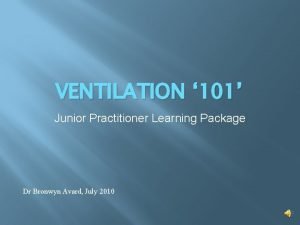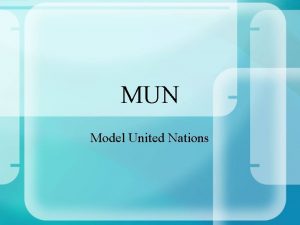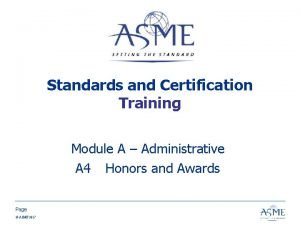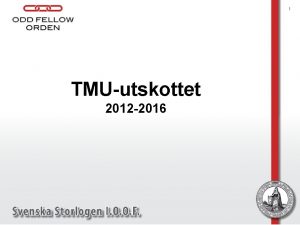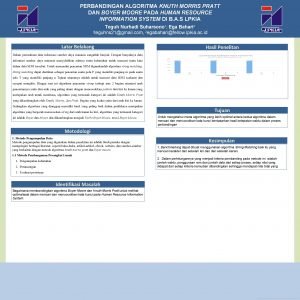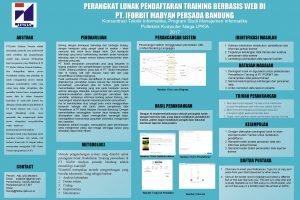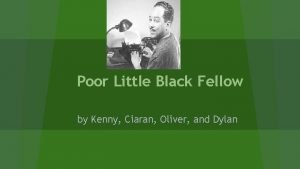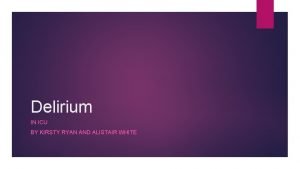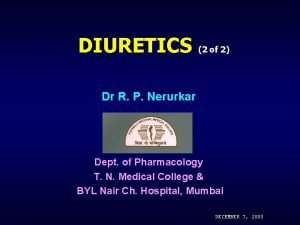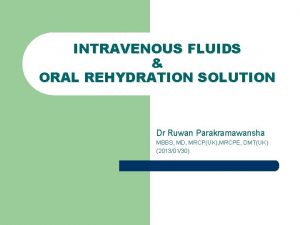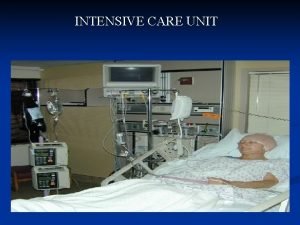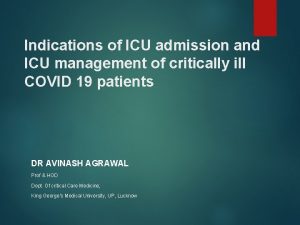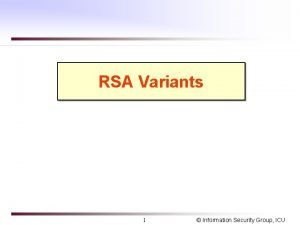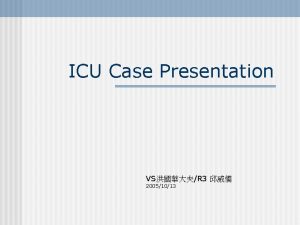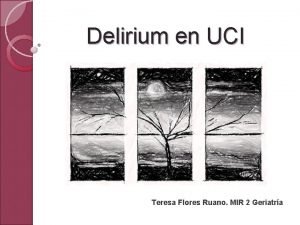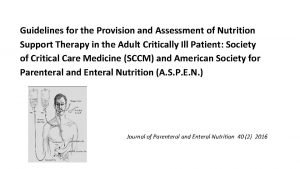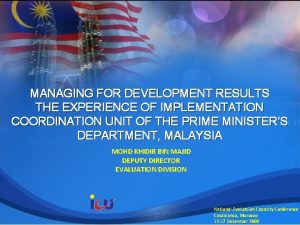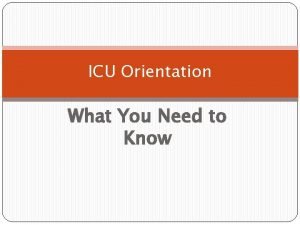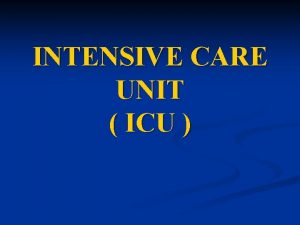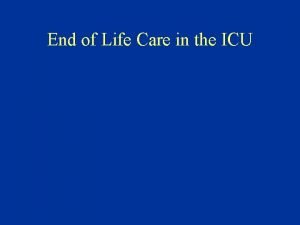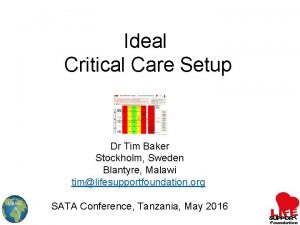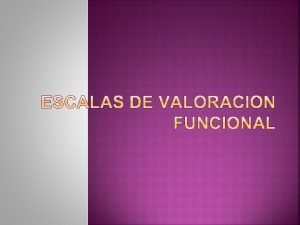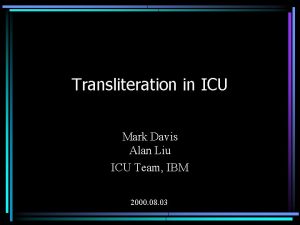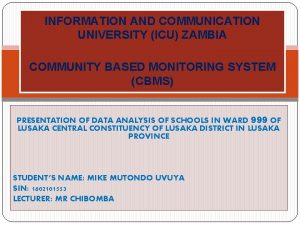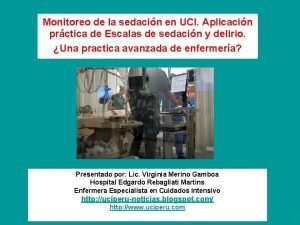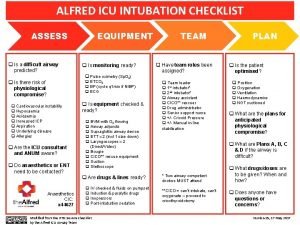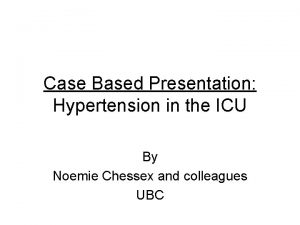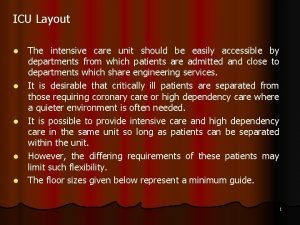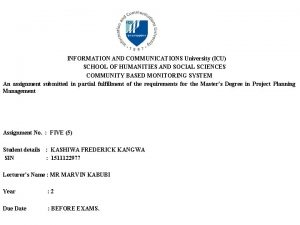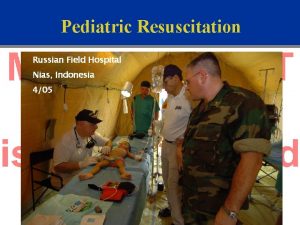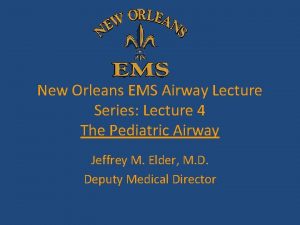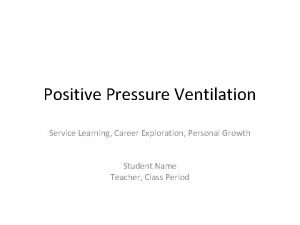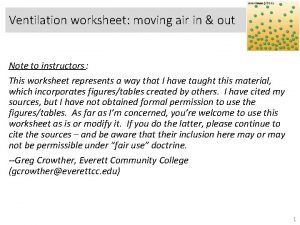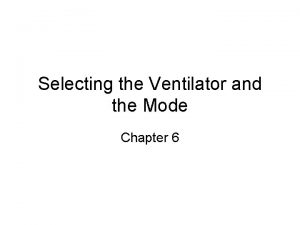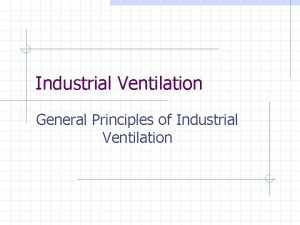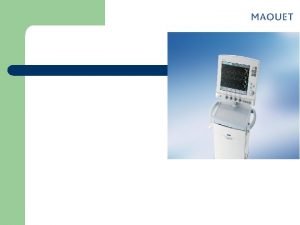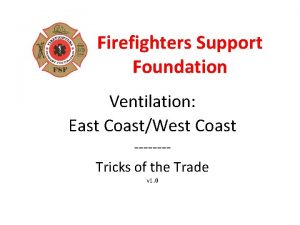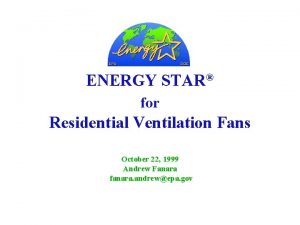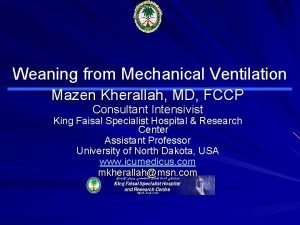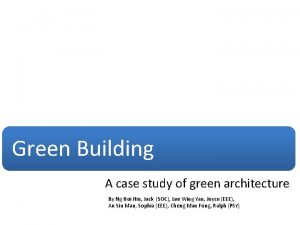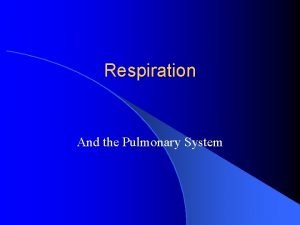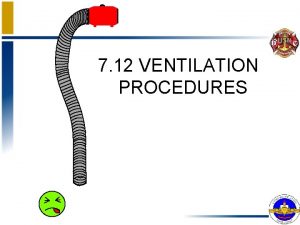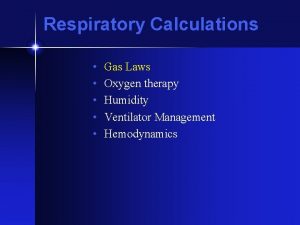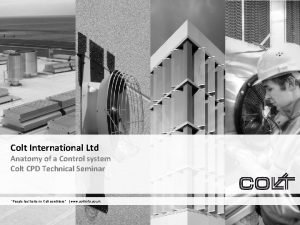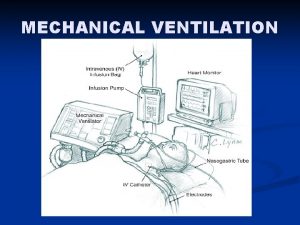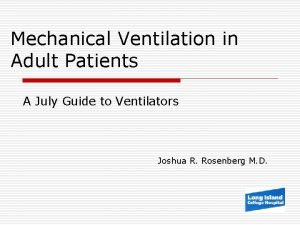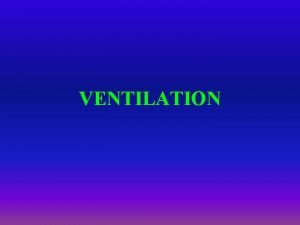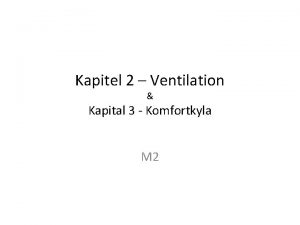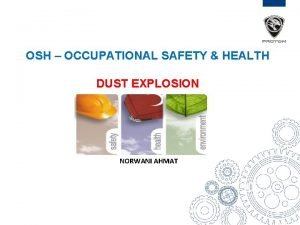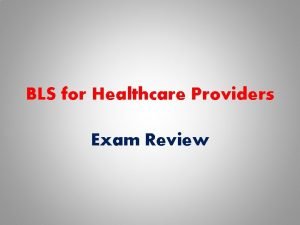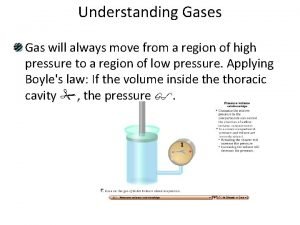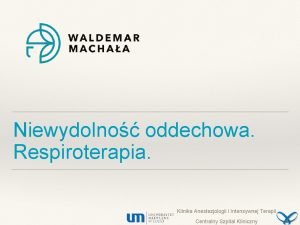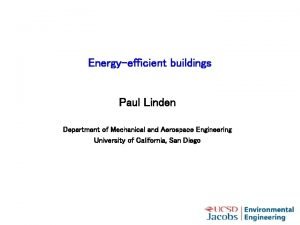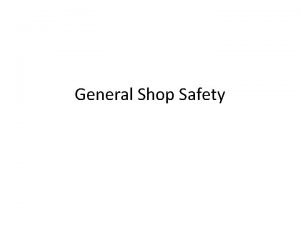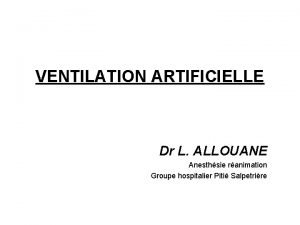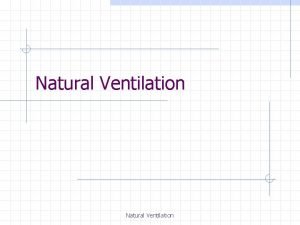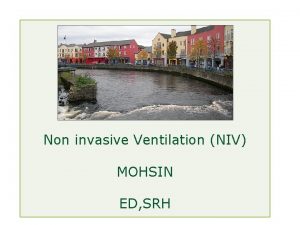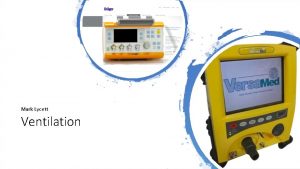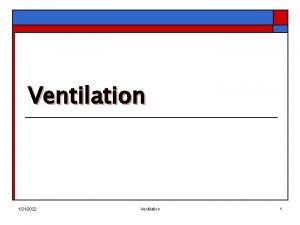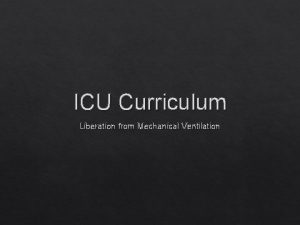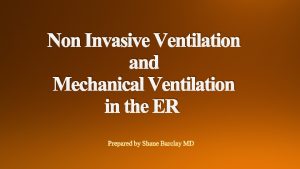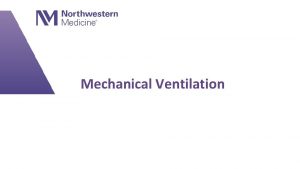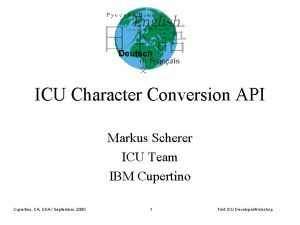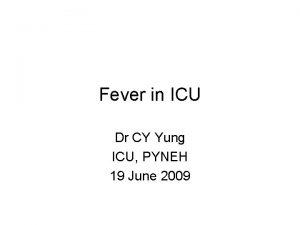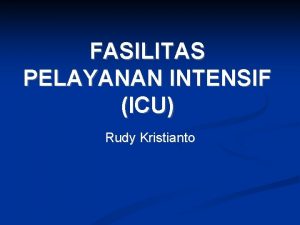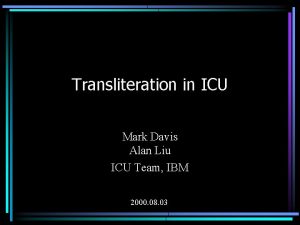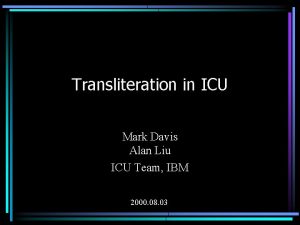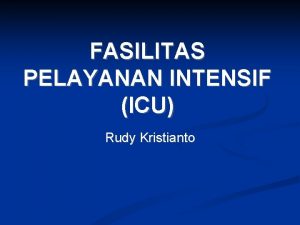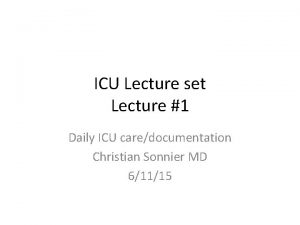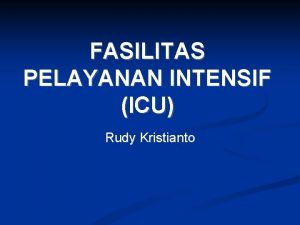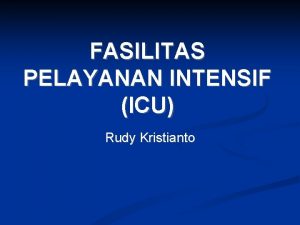Mechanical Ventilation 101 Dr Paul Healey ICU Fellow































































































- Slides: 95

Mechanical Ventilation 101 Dr Paul Healey ICU Fellow John Hunter Hospital Newcastle

Outline • • What is mechanical ventilation ? History of mechanical ventilation. Why do we mechanically ventilate patients ? Modes of mechanical ventilation ? Setting the ventilator Trouble shooting ventilation Refractory Hypoxaemia When to extubate the patient ?

Mechanical ventilation • Is a method to mechanically assist or replace spontaneous ventilation. • Is a supportive therapy. • Two main divisions of mechanical ventilation 1. Negative pressure ventilation 2. Positive pressure ventilation



Polio epidemic – Copenhagen 1952


Positive pressure ventilation

Mechanical ventilation Positive pressure ventilation • Non-invasive ventilation (NIV) modes: – Continuous Positive Airways Pressure (CPAP) – Bi-level Positive Airways Pressure (Bi. PAP) • Invasive positive pressure ventilation (IPPV) modes: – Volume Control Ventilation (VCV) – Pressure Control Ventilation (PCV) – Pressure Support Ventilation (PSV)

Case study • Mr CS – 75 year old male, weighs 80 kg. • Background – IHD, Ex-smoker 20 years ago, Type II DM, AF. • Day 4 post Hartmans procedure for colorectal cancer, severe abdominal pain and fever. Anastamotic leak on CT scan. Commenced on IV Tazocin. • Taken to OT and had extensive washout of abdomen and stoma formed. Abdomen is closed. • Currently ventilated in OT on Fi. O 2 50% PCV-VG 14 x 480 m. L, with PEEP of 6 cm. H 2 O. • Vital signs: HR 115, BP 110/50 on 0. 2 mcg/kg/min of Noradrenaline, Sa. O 2 96%, temperature 38. 8 degrees. • Last ABG: p. H 7. 32, Pa. O 2 92 mm. Hg, Pa. CO 2 35 mm. Hg, Lactate 2. 2 mmol/l and BE -5. 3 mmol/l • What is the reason for mechanically ventilating this patient ? ? • What are the risks of mechanical ventilation ? ?

Why do we mechanically ventilate patients ? • Indications for mechanical ventilation – Impaired level of consciousness – Potential airway compromise – Respiratory failure • Hypoxaemic • Hypercapnoeic – Work of breathing and fatigue – Cardiac failure

Risks of mechanical ventilation 1. Respiratory Complications • Infection – Ventilator Associated Events • Ventilator Induced Lung Injury (VILI) – Barotrauma – Volutrauma – Atelectotrauma • Gas trapping and intrinsic PEEP • Oxygen toxicity 2. Non-respiratory complications • Haemodynamic compromise • Raised ICP • Reduced urine output

Modes of ventilation

Modes of invasive ventilation Nomenclature • Triggering – what initiates a breath – Ventilator – Patient • Inspiration – Volume – Pressure • Cycling – what determines change from inspiration to expiration – Volume – Time – Flow • Exhalation – Passive process due to lung elastic recoil

Modes of ventilation • Classification based on patient triggering: 1. Mandatory ventilation modes 2. Spontaneous ventilation modes 3. Adaptive ventilation modes

Modes of ventilation 1. Mandatory ventilation modes • Volume control ventilation (VCV) • Pressure control ventilation (PCV) • Synchronised Intermittent Mandatory Ventilation (SIMV)

Ventilator waveforms

Volume Control Ventilation


Modes of ventilation 1. Mandatory modes • Volume control ventilation – All breaths given are the same preset volume • Advantages – Relatively simple to set – Guaranteed minute ventilation – Rests respiratory muscles • Disadvantages – Historically, no patient triggering – Ventilator-patient dysynchrony – Reduced lung compliance will result in increased pressures and potential barotrauma

PCV


Modes of ventilation 1. Mandatory modes • Pressure control ventilation – All breaths have same preset inspiratory pressure and time • Advantages – Simple to set – Avoids high inspiratory pressures – Rests respiratory muscles • Disadvantages – Historically, no patient triggering – Change in lung compliance results in change in tidal volumes – No guaranteed minute ventilation

SIMV

SIMV

Modes of ventilation 1. Mandatory modes • SIMV - Mandatory VCV or PCV with triggered PSV • Advantages - Better patient-ventilator synchrony - Guaranteed minute ventilation - Allows patient triggering and possible weaning • Disadvantages - More complicated mode with multiple settings

PSV


Modes of ventilation 2. Spontaneous ventilation modes • Pressure support ventilation – Provides a set inspiratory and expiratory pressure during patient initiated breathing – Inspiration ends when inspiratory flow falls to a preset level (usually 25%) • Advantages – Maintains full spontaneous ventilation – Better ventilator-patient synchrony – Weaning mode of ventilation • Disadvantages – Historically no back-up ventilation – Changes in patient effort and lung compliance effect tidal volumes

PRVC


Mechanical ventilation 3. Adaptive ventilation modes – Assist – Pressure regulated volume control – PCV - VG

Case study • Mr CS – 75 year old male, weighs 80 kg. • Background – IHD, Ex-smoker 20 years ago, Type II DM, AF. • Day 4 post Hartmans procedure for colorectal cancer, severe abdominal pain and fever. Anastamotic leak on CT scan. Commenced on IV Tazocin. • Taken to OT and had extensive washout of abdomen and stoma formed. Abdomen is closed. • Currently ventilated in OT on Fi. O 2 50% PCV-VG 14 x 480 m. L, with PEEP of 6 cm. H 2 O. • Vital signs: HR 115, BP 110/50 on 0. 2 mcg/kg/min of Noradrenaline, Sa. O 2 96%, temperature 38. 8 degrees. • Last ABG: p. H 7. 32, Pa. O 2 82 mm. Hg, Pa. CO 2 35 mm. Hg, Lactate 2. 2 mmol/l and BE -5. 3 mmol/l • How are you going to set the ventilator ? ? • What other information would you want to know ? ?

Setting the ventilator • • • Fi. O 2 Mode Triggering Tidal volume Inspiratory pressure PEEP • • • Respiratory rate Inspiratory time I: E ratio Inspiratory flow Alarm settings – Peak pressure – PEEP – Minute ventilation

How to set a ventilator • Fi. O 2 • – Begin at 100% and wean as quickly as able to < 60% • Mode – Volume controlled ventilation • Set tidal volume 6 – 8 m. L/kg – Start at 10 – 12 breaths per minute • • • – Flow triggering : 1 – 5 L/min – Pressure triggering: -0. 5 to -2. 0 cm. H 2 o • Inspiratory pressure (Plateau) – Aim < 30 cm. H 2 O. – VCV or SIMV = plateau pressure – PCV = Sum of PEEP and Inspiratory pressure • PEEP – Start with 5 -10 cm. H 20 I: E ratio – Normally 1: 2 – Increase in obstructive airways disease (COPD/Asthma) Set inspiratory pressure 10 – 20 cm. H 2 O Triggering Inspiratory time – Normal 0. 8 – 1. 3 seconds – Pressure controlled ventilation • Respiratory rate • Inspiratory flow – 40 – 60 L/min

Case study • Mr CS – 75 year old male, weighs 80 kg. • Background – IHD, Ex-smoker 20 years ago, Type II DM, AF. • Day 4 post Hartmans procedure for colorectal cancer, severe abdominal pain and fever. Anastamotic leak on CT scan. Commenced on IV Tazocin. • Taken to OT and had extensive washout of abdomen and stoma formed. Abdomen is closed. • Currently ventilated in OT on Fi. O 2 50% PCV-VG 14 x 480 m. L, with PEEP of 6 cm. H 2 O. • Vital signs: HR 115, BP 110/50 on 0. 2 mcg/kg/min of Noradrenaline, Sa. O 2 96%, temperature 38. 8 degrees. • Last ABG: p. H 7. 32, Pa. O 2 82 mm. Hg, Pa. CO 2 35 mm. Hg, Lactate 2. 2 mmol/l and BE -5. 3 mmol/l • How are you going to set the ventilator ? ? • What other information would you want to know ? ?


Setting the ventilator • • • Fi. O 2 Mode Triggering Tidal volume Inspiratory pressure PEEP • • • Respiratory rate Inspiratory time I: E ratio Inspiratory flow Alarm settings – Peak pressure – PEEP – Minute ventilation

What is the evidence ? ?

Ventilation modes - evidence • A single RCT and 3 observational trials • There were no statistically significant differences in mortality, oxygenation, or work of breathing • PCV – lower peak airway pressures – a more homogeneous gas distribution (less regional alveolar over distension) – improved patient-ventilator synchrony – earlier liberation from mechanical ventilation than volumelimited ventilation • VCV – it can guarantee a constant tidal volume, ensuring a minimum minute ventilation

Evidence for ventilation





Evidence for ventilation



Evidence for ventilation –FACCT trial


Trouble shooting ventilation

Case study • Mr CS – 75 year old male, weighs 80 kg. • Background – IHD, Ex-smoker 20 years ago, Type II DM, AF. • Day 4 post Hartmans procedure for colorectal cancer, severe abdominal pain and fever. Anastamotic leak on CT scan. Commenced on IV Tazocin. • Taken to OT and had extensive washout of abdomen and stoma formed. Abdomen is closed. • Vital signs: HR 115, BP 110/50 on 0. 2 mcg/kg/min of Noradrenaline, Sa. O 2 96%, temperature 38. 8 degrees. • The nursing staff come to you after one hour and show you the following ABG: – p. H: 7. 21, Pa. O 2 82 mm. Hg, Pa. CO 2 58 mm. Hg, Lactate 2. 1 mmol/l, BE 5. 2 mmol/l • How will you adjust the ventilator ? ?

Trouble shooting ventilation • We need to increase minute ventilation • Minute ventilation = TV x RR

Trouble shooting ventilation 1. Dead space ventilation - Excess tubing, especially in paediatrics 2. Tidal volume – Aim 6 -8 m. L/kg – Risk of barotrauma if plateau pressure > 30 cm. H 2 O – Risk of volutrauma 3. Respiratory rate – Aim for < 30 – Monitor for gas trapping, dynamic hyperinflation and intrinsic PEEP

Trouble shooting ventilation

Trouble shooting ventilation

Case study • Mr CS – 75 year old male, weighs 80 kg. • Background – IHD, Ex-smoker 20 years ago, Type II DM, AF. • Day 4 post Hartmans procedure for colorectal cancer, severe abdominal pain and fever. Anastamotic leak on CT scan. Commenced on IV Tazocin. • Taken to OT and had extensive washout of abdomen and stoma formed. Abdomen is closed. • Vital signs: HR 130, BP 90/50 on 0. 3 mcg/kg/min of Noradrenaline, Sa. O 2 96%, temperature 38. 8 degrees • He is ventilated in ICU, and adjustments made after the last ABG. • The nursing staff come to you later that shift stating the patient has desaturated to 85% and shows you the following ABG: • p. H 7. 30, Pa. O 2 52 mm. Hg, Pa. CO 2 40 mm. Hg, lactate 2. 0 mmol/l, BE 5. 1 mmol/l • How will you manage this ? ?

Trouble shooting ventilation • Hypoxaemia • Most patients need Sa. O 2 90 -94% at the most, some only 88 -92% (chronic respiratory disease) • What to do ? ?


Patient is still hypoxic !

Trouble shooting ventilation • Increase Fi. O 2 • Increase mean alveolar pressure – Main determinant of oxygenation – Can be increased by increasing • Inspiratory pressure or tidal volume • Inspiratory time • PEEP • Increase PEEP – Maintains open alveoli and reduces shunt




What if Sa. O 2 is still only 85% ? ?

Refractory hypoxaemia

Refractory hypoxaemia 1. Recruitment maneuvers • Is a high pressure inflation maneuver aimed at temporarily raising the transpulmonary pressure above levels typically obtained with mechanical ventilation. • Purpose is to overcome the high “opening pressures” of diseased and collapsed alveoli. • By opening alveoli, this increases the area available for gas exchange and oxygen transfer.

Spectrum of Regional Opening Pressures (Supine Position) Opening Pressure Collapse Superimposed Pressure Inflated Small Airway Alveolar Collapse (Reabsorption) Consolidation = Lung Units at Risk for Tidal Opening & Closure 0 10 -20 cm. H 2 O 20 -60 cm. H 2 O




Refractory hypoxaemia 2. Inhaled prostacyclin • Nebulised prostacylin (PGI-2) given continuously via an ultrasonic nebuliser attached to the inspiratory limb of the ventilator. • An alternative to inhaled Nitric Oxide which is expensive and requires scavenging set-up.



Refractory hypoxaemia 3. Prone ventilation • Has been studied in severe ARDS • Complex process with safety issues – Risk of extubation – Risk of removing lines – Pressure areas – OH and S

PROSEVA trial


Refractory hypoxaemia 4. High frequency oscillatory ventilation • Specialised equipment • Respiratory rates of 5 -15 Hz • Mean airway pressures of 30 cm. H 2 O • Tidal volumes smaller than dead space ! • Effective at rescue oxygenation


OSCILLATE trial


OSCAR trial


Refractory hypoxaemia 5. Extracorporeal Membrane oxygenation (ECMO) • Involves gas exchange via an extracorporeal circuit. • Can support the lungs alone (V-V ECMO) or the heart and lungs (V-A ECMO) • Significant risks and costs


CESAR trial


Case study • • Mr CS – 75 year old male, weighs 80 kg. Background – IHD, Ex-smoker 20 years ago, Type II DM, AF. • • • Day 4 post Hartmans procedure for colorectal cancer, severe abdominal pain and fever. Anastamotic leak on CT scan. Commenced on IV Tazocin. Taken to OT and had extensive washout of abdomen and stoma formed. Abdomen is closed. He has been ventilated in ICU for 5 days. He had a brief period of hypoxaemia due to bibasal atelectasis. It resolved with a recruitment maneuver and increased PEEP. He has been on PSV for 24 hours, with settings Fi. O 2 30%, Inspiratory pressure 10 cm. H 2 O and PEEP 5 cm. H 2 O. His vital signs are: HR 90, BP 130/70, Sa. O 2 98%, temperature 37. 2 degrees His latest blood gas shows: – p. H 7. 38, Pa. O 2 95 mm. Hg, Pa. CO 2 39 mm. Hg, lactate 0. 7 mmol/L and BE 1. 0 mm 0 l/L • • How will you assess him for extubation ? ? Should you extubate him onto NIV ? ?

Assessment for extubation 1. Disease process – Has disease process that required MV resolved – Complications – sepsis, transfusion – Pain – especially with thoracotomy, laparotomy – Fluid balance : ideally cummulative balance < 3 L 2. Airway – Grade of intubation – How patient was intubated – Presence of cuff leak – Appropriate assistance available

Assessment for extubation 3. Neurological – Awake and co-operative – Pain controlled – Weakness 4. Respiratory – – – – Ventilator support – ideally PSV < 10/5 cm. H 2 O RR <30 Vital capacity > 10 m. L/kg Cough Secretion load – small load Rapid shallow breathing index (f/Vt) <100 Review of CXR 5. Cardiovascular – Stable cardiac rhythm – Minimal ionotrope/vasopressor requirement

Extubation onto NIV



Conclusion • Modes of ventilation – Mandatory – Spontaneous – Adaptive • • • How to set the ventilator Evidence for ventilator strategies Trouble shooting ventilation Refractory Hypoxia Assessment for extubation

 Mode of ventilation
Mode of ventilation Iron lung
Iron lung Ventilators 101
Ventilators 101 Paul harris fellow certificate template
Paul harris fellow certificate template John healey psychic
John healey psychic Pressure support ventilation
Pressure support ventilation Define ventilation
Define ventilation Peep ventilator
Peep ventilator Transairway pressure
Transairway pressure Negative pressure ventilation firefighting
Negative pressure ventilation firefighting Mechanical ventilation indications
Mechanical ventilation indications Positive end expiratory pressure
Positive end expiratory pressure Ventilation learning package
Ventilation learning package Actual mechanical advantage vs ideal mechanical advantage
Actual mechanical advantage vs ideal mechanical advantage Ieee fellow program
Ieee fellow program Odd fellow orden
Odd fellow orden Policy statement example mun
Policy statement example mun Asme fellow nomination
Asme fellow nomination Nhmrc emerging leadership fellow
Nhmrc emerging leadership fellow Odd fellow medlemsregister
Odd fellow medlemsregister Little fellow
Little fellow Fellow lpkia
Fellow lpkia Ieee fellow nomination
Ieee fellow nomination Customer role in service delivery example
Customer role in service delivery example Fellow lpkia
Fellow lpkia 2bee3
2bee3 Segment routing ipv6
Segment routing ipv6 Poor little black fellow
Poor little black fellow Language
Language Spironolactone moa
Spironolactone moa Hypotonic iv solutions
Hypotonic iv solutions Icu medical b3108
Icu medical b3108 Intensive care unit definition
Intensive care unit definition Icu indication
Icu indication Icu security group
Icu security group Icu case presentation
Icu case presentation Icu acuity tool
Icu acuity tool Cam icu escala
Cam icu escala Icu localization
Icu localization Icu unicode
Icu unicode Diet chart for icu patients
Diet chart for icu patients Kp icu jpm
Kp icu jpm Icu orientation
Icu orientation Pressors icu
Pressors icu Cam icu escala
Cam icu escala Icu case presentation
Icu case presentation Kanisha belt
Kanisha belt Klasifikasi pelayanan icu
Klasifikasi pelayanan icu Rumus perhitungan tenaga perawat menurut ppni
Rumus perhitungan tenaga perawat menurut ppni End of life care in icu
End of life care in icu Icu security group
Icu security group Alaeg
Alaeg Icu library
Icu library Critical care for dummies
Critical care for dummies Escala nivel de consciencia
Escala nivel de consciencia Labetalol infusion in icu
Labetalol infusion in icu Icu transliterator
Icu transliterator Pearl abcde
Pearl abcde Information and communications university zambia
Information and communications university zambia Escala rass
Escala rass Alfred icu
Alfred icu Chatecholamine
Chatecholamine Icu layout and design
Icu layout and design List of lecturers at icu zambia
List of lecturers at icu zambia 405 field hospital
405 field hospital Bag mask ventilation
Bag mask ventilation Vertical ventilation definition
Vertical ventilation definition Ventilation worksheet
Ventilation worksheet Mode of ventilation
Mode of ventilation Ventral respiratory group
Ventral respiratory group Types of industrial ventilation
Types of industrial ventilation Aprv waveform
Aprv waveform Venturi mask 50 percent
Venturi mask 50 percent East coast fire and ventilation
East coast fire and ventilation Residential ventilation fans market
Residential ventilation fans market Ventilator weaning
Ventilator weaning T piece ventilation
T piece ventilation Natural ventilation
Natural ventilation Types of respiration
Types of respiration Ventilation calculation formula for confined space
Ventilation calculation formula for confined space 5 environmental factors of florence nightingale
5 environmental factors of florence nightingale Minute ventilation normal
Minute ventilation normal Colt ventilation us
Colt ventilation us Pressure support ventilation
Pressure support ventilation What is pressure support ventilation
What is pressure support ventilation Industrial ventilation hood
Industrial ventilation hood Komfortkyla ventilation
Komfortkyla ventilation Norwani ahmat
Norwani ahmat Pulse check in unresponsive victim
Pulse check in unresponsive victim Ventilation graph
Ventilation graph Pontopian
Pontopian Single sided ventilation
Single sided ventilation General shop safety rules
General shop safety rules Ventilation assistée controlée
Ventilation assistée controlée Air change rate calculation
Air change rate calculation Non invasive ventilation
Non invasive ventilation
